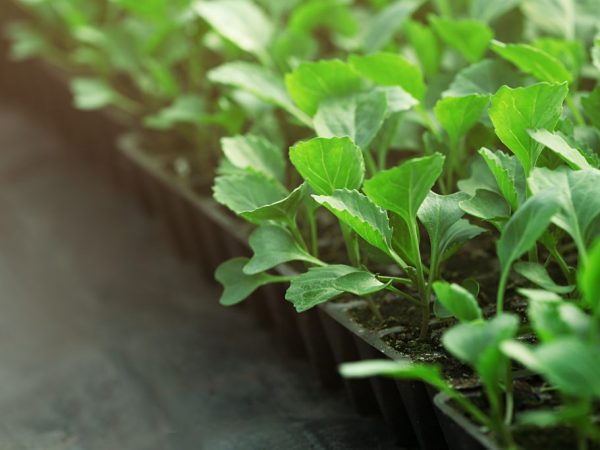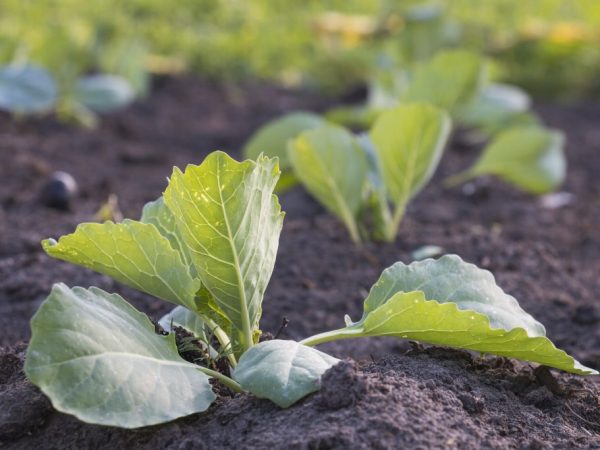Characteristics of Megaton white cabbage
White cabbage Megaton belongs to high-yielding varieties. The fruits of the plant are large in size, the variety is resistant to diseases.

Characteristics of white cabbage variety Megaton
Characteristics of the variety
The hybrid came from Holland. It is medium late: from the emergence of seedlings to full maturation, it takes from 135 to 170 days.
Characteristics of the Megaton cabbage variety and its advantages:
- high yield: from 1 sq. m collect up to 9 kg of fruit;
- frost resistance: the variety can withstand temperatures up to -8 ° С;
- large-fruited;
- good transportability, which allows selling vegetables on the market;
- resistance to disease and cracking (even after prolonged rains).
The variety gives the best yield indicators in regions with a temperate climate. In hot weather, productivity is reduced.
Description of the head
The rosette of leaves is large, it can be slightly raised or horizontal. The shape is rounded, the leaves have a concave wavy edge. The color is light green. Characteristic waxy coating of medium intensity, which creates a matte finish. The integumentary leaves are wrinkled, with a noticeable anthocyanin.
Heads of cabbage are large, dense inside. According to the description, Megaton cabbage has a hard fruit at the stage of technical ripeness. The shape is rounded, the head is slightly flattened. On the cut, the vegetable is white.
The inner stump is 15 cm long. The average weight of vegetables is 3-4 kg. Some specimens reach a weight of 10-15 kg.
Megaton cabbage is sweet, juicy, crunchy. Fresh vegetables have the following chemical composition (based on 100 g of product):
- 8-8.7 dry matter;
- 0.6-3% protein;
- 39.3-43.6 mg of ascorbic acid;
- 3.8-5% sugar.
The shelf life is short: from 1 to 3 months. Weaknesses also include the stiffness of the leaves, especially immediately after cutting.
Application of the vegetable
Cabbage is most often used for pickling. In this form, it is stored for a long time. Salads and cabbage rolls are not prepared from it, since the fruits contain a lot of sugar.
Growing seedlings

Seedling planting accelerates harvesting
According to the description, Megaton cabbage is cultivated only by the seedling method. This method contributes to the improvement of yield indicators, accelerates the process of fruit ripening.
Seed preparation
First, the seeds are soaked in hot water (50 ° C) for 20 minutes, then they are placed in chilled boiled water for 3-5 minutes. To prevent diseases, a solution of "Epin" or "Zircon" is prepared. The seeds are placed in it. After that, the seeds are dried. The processed, purchased seed does not require preparation.
Sowing
Seeds of Megaton cabbage are distinguished by a high level of germination; they are planted in April. For this, special boxes or cassettes are prepared. The soil is taken fertile and mixed with wood ash. To disinfect, it is poured with boiling water with potassium permanganate. The soil is ready for sowing when its temperature matches the ambient temperature.
The plantings do not thicken. The distance between the grooves should be 6-7 cm, between the seeds - 3-4 cm, the planting depth - 3 cm. If a pick is not planned in the future, the indents are increased. The boxes are placed under glass on the street or in a greenhouse, in a greenhouse. Sunlight should be on them throughout the day.
Care
The ambient temperature should not exceed 10 ° C. Sprouts appear 3-4 days after sowing. In phase 2 of true leaves, the temperature is increased to 14-18 ° C. Make sure that there are no sharp jumps. The premises are regularly ventilated. Watering is carried out with warm water as the topsoil dries out. After that, the soil is loosened. Weeds are removed so that they do not overwhelm the plants.
Seedlings of Megaton cabbage need feeding when 2 true leaves have appeared on the sprouts. For this purpose, a complex fertilizer is used, which is used according to the instructions.
A week before planting in a permanent place, the seedlings are hardened. During this period, watering is reduced. The boxes are taken outside for a while, provided the weather is good.
Picking
A pick is made when 3-4 leaves appear on the seedlings. Seedlings are distributed in separate containers. For this:
- the earth is well moistened;
- plants are removed together with an earthen lump;
- reduce the root by 1/3 part;
- covered with soil until the cotyledon leaves.
Planting in open ground

Strong seedlings for open field
It is worth planting Megaton cabbage in an open area when the seedlings reach 15-20 cm. They should have 4-6 leaves and a thick stem. Disembarkation dates are approximately the end of May. Time may vary depending on the region.
- The crop area should be well lit. White cabbage prefers loam.
- The acidity of the earth should not be great. To neutralize it, lime or dolomite flour is added to the soil.
- The soil is prepared in the fall. To do this, remove the remnants of the harvested crop, weeds.
- Rotted manure (10 kg per 1 sq. M) or mineral fertilizers are introduced. This helps the culture to develop strong roots.
- The earth is being dug up. Bad predecessors for planting Megaton cabbage are cruciferous, good ones are carrots, onions, potatoes.
Holes are made in the spring. The distance between them should be 50-60 cm. A handful of ashes are poured onto the bottom of each, a solution of hot water and potassium permanganate is poured in. To make it easier to care for the crop, planting is done in a two-row way. The roots of the seedlings are directed straight, covered with earth so that the first true leaf rises. After planting, immediately produce abundant watering. If the weather is hot, the plants shade for the first 2-3 days. Fortified seedlings can withstand frosts down to -3 ° C.
Care
Cabbage variety Megaton F1 pleases with a good result, if you provide it with proper care.
Watering
After planting, the culture needs abundant moisture. Water is brought in warm with the calculation of 15 liters per 1 sq. m. Its quantity is regulated according to the weather. Excess moisture provokes root rot, so do not overmoisten the soil. In rainy weather, watering is reduced or stopped altogether. Throughout the entire growth, watered every 2-3 days. During the period of pouring the head of cabbage, the plant is moistened in a smaller amount. Watering is stopped 2-3 weeks before harvesting vegetables: this prevents head cracking.
Loosening and hilling
White cabbage Megaton requires loosening of the soil after watering or rain. This process provides oxygen to the root system, which helps it to strengthen. Hilling is done when 6-7 true leaves appear on the cabbage. The manipulation promotes the formation of additional roots, as a result of which the nutrition of vegetables increases.
Weeds are removed regularly. Mulching the plants with peat helps to suspend their growth, which also retains moisture in the soil.
Top dressing
The cultivation of cabbage Megaton F1 provides for the application of fertilizers. She is fed 3 times during the summer:
- The first time the plants are fertilized 2-3 weeks after planting in a permanent place. During this period, ammonium nitrate and potassium salt (10 g per 10 liters of water) are useful. Funds are poured in between the rows. They contribute to the growth of vegetative mass and the formation of a powerful root system.
- The next feeding is carried out during the period of head formation, therefore, nitrogen-containing fertilizers are used. With a lack of nitrogen, the leaves of the head turn yellow, the culture does not develop well. An infusion of mullein or bird droppings is used, which is prepared as follows: 0.5 liters of substance per 10 liters of water. Fertilizer is applied by watering.
- The last time the plant is fed is 2-3 weeks after the previous fertilization. During this time, nitrogen and phosphorus are useful. To provide plants with them, they prepare top dressing: 20 g of ammonium nitrate, 30 g of superphosphate, 10 liters of water.
Diseases and pests
According to the characteristics, Megaton F1 cabbage is resistant to gray rot, keel, fusarium wilt, but it needs preventive measures against black leg, powdery mildew and rhizoctonia disease. These include dressing the seeds before planting. To prevent the defeat of the culture with a black leg, use the drug "Tiram". It is introduced into the soil, the consumption is 50 g per 1 sq. m.
Garlic infusion is prepared from powdery mildew. For this:
- chop 100 g of garlic;
- add 10 liters of water;
- insist 12 hours.
Before planting, for the purpose of prophylaxis, the drug "Quadris" or "Hom" is introduced into the soil. This prevents the development of rhizoctonia. With the development of diseases, the affected leaves are torn off and burned.
Also, cabbage is affected by a number of pests:
- Cabbage moth. They are fighting it with the help of the drug "Lepidocyte". It is added in an amount of 20-30 g to 10 liters of water.
- Cabbage aphid. Against her, use the "Decis-Profi", which is dosed according to the instructions.
- Whitefly. "Aktelik" helps against this pest. In 1 liter of water, dissolve 1 ampoule of the substance.
- Medvedka. They use the Medvetox remedy against it. It is applied between the rows to a depth of 3-5 cm. Consumption - 2 g per 1 sq. m.
For the prevention of pest damage, mixed plantings are made. Marigolds and spicy herbs scare away insects.
Conclusion
Cabbage Megaton F1 has proven itself well in cultivation. The late-ripening variety is ideal for fermentation. It is characterized by high productivity and large-fruited.
The culture is unpretentious to growing conditions, so proper care provides an effective result.


